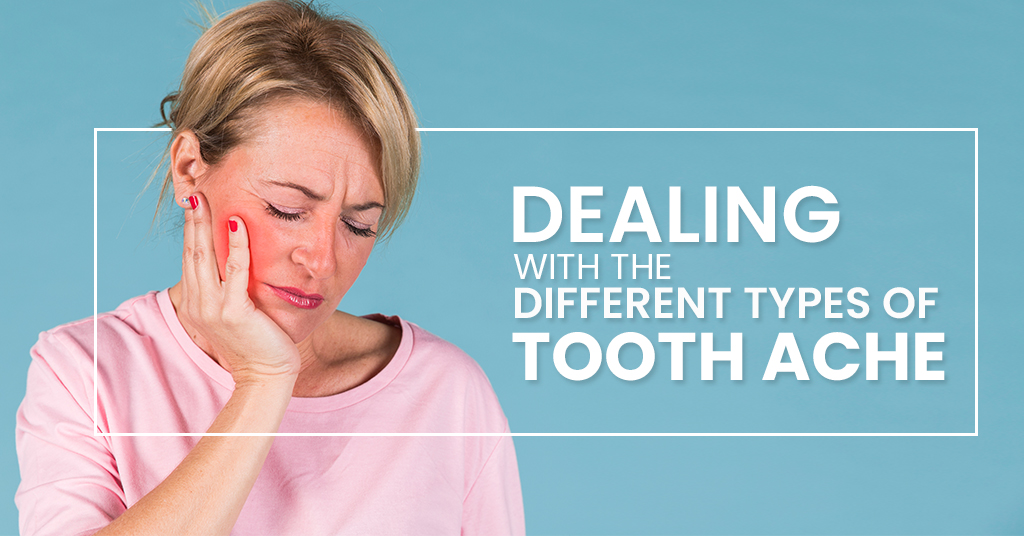Menu

You have a throbbing headache, your gums are inflamed, and your mouth is sore and tender. Well, you’ve got a toothache. Usually tooth pain is caused by problems with the teeth or jaws. The degree of tooth pain can range from mild pangs of pain to excruciatingly painful. Whether it’s a short-lived, sharp, shooting pain or a prolonged, mild ache, you should see your dentist at once.
You may feel a shooting pain when you eat or drink something hot or cold? When you are sensitive to hot and cold sensations, the pain triggered by the sensation stops quickly, or it lingers for 30 seconds or more. Temperature sensitivity is associated with several different tooth problems. In some cases the problem causing it is serious therefore the pain is more intense, lasting, and consistent.
Usually this is caused by worn-down enamel and gum recession. In this case, you’re sensitive to hot and cold temperatures, but the pain is relatively minor and fades quickly. The first thing to do is switching to a toothpaste for sensitive teeth and avoiding hot, cold, or highly acidic foods and beverages. If your sensitivity condition doesn’t improve within a week, then its underlying cause may be more serious. This could vary from tooth decay, fractures, worn fillings, exposed roots to gum disease.
Sharp pain
Sharp pain is caused mostly from some form of physical tooth damage. Even added pressure from toothbrushing or biting, can also spark this kind of pain.
Some things that may cause this short-lived pain reaction include
All of the above can leave the inner portion of your tooth, called the pulp, unprotected. The pulp is your tooth’s nerve and blood supply. In the case of a perfectly healthy tooth, the pulp is protected by 3 outer layers i.e the enamel, cementum, and dentin. Enamel is the visible part of the tooth that connects to the dentin. The cementum also connects to the dentin, but it covers the tooth root.
Things that damage the enamel, like a cavity, chip, or crack, may cause tooth pain. Anything that exposes the cementum also might set you up for the pain. Cementum is softer than enamel. When it is left unprotected by the gums, it can be worn away easily.
Any damage caused to the enamel or cementum may leave the dentin exposed. The
dentin directly connects to the pulp through tiny tubes or canals. Researchers still don’t know the cause but exposure of the dentin may leave the pulp sensitive to things like changes in temperature, certain foods and beverages, or pressure.
Intense Throbbing Pain
Many times tooth pain involves an area in or around the mouth and jaw with a steady ache that goes on for days and only progresses. This type of pain may point out to signs of an infection. When you’re experiencing such severe pain, it is best to contact an emergency dentist immediately and not delay any further.
Such throbbing pain may be because of an infection present below the tooth apex, spreading from the infection inside the tooth pulp. .
When the bacteria that cause tooth decay get into the pulp inside the tooth. if not treated in time, will reach below the tooth apex. Made up of living tissue and connective cells, the nerves inside the pulp are quite sensitive. The pulp infections once reach the bone, can caue severe pain. There are other pathways by which the pus inside that bone can travel up into the gums causing a visible swelling.
Treatment
How bad is your dental pain on a scale of 1 to 10? Is it bad enough to see a dentist? It is best to see your dentist regardless. In most cases the pain only progresses. The pain could last for more than a day or two, and maybe accompanied with a fever, ear pain, or pain when you open and close your mouth. With the help of your dentist you’ll find out the cause of your tooth pain. A dental examination or x-rays helps identify the exact nature and location of your tooth pain.
Broken Tooth or Cavity
The cause of sharp pain is usually caused by enamel damage like cavities, chips, or cracks, which requires repair. A dentist can solve the problem of a broken tooth or a cavity with a crown or a dental filling or you may need a new dental filling or crown.
Gum Disease
To reduce tooth pain caused due to gum disease, a technique called scaling and planing may be carried out where a dental professional removes plaque buildup and pus collection from inside the gum line, maybe required.
A dead tooth
In cases where there is a severe infection of the tooth, your dentist will work to identify the source. Once the cause is known, the patient can look at options like removing the infected tissue. In cases where there is severe infection below the apex of the tooth, a root canal may be needed to remove the decayed tissue within the tooth and draining the pus out through the tooth.
Conclusion
Tooth pain can be experienced in different ways and taking care of the problem
means finding the exact reason for the pain. Avoiding or delaying treatment of mouth infections quickly can result in even more severe and painful mouth problems, so don’t delay!
As and when your teeth age, your dental hygiene and health requirements will change. Therefore it is vital to stay in touch with your dentist and follow all recommendations provided. By following these recommendations, your teeth should stay strong and healthy for a long time, if not for the duration of your life.


| PRODUCTS | QTY | PRICE | VALUE in INR |
|---|
| PRODUCTS | QTY | PRICE | VALUE in INR |
|---|